If you are up to visiting archaeological sites of different time period and different reigns, Jordan is the best choice! The country is known for its best preserved ancient sites. Each had their own peculiarity and all are a must-visit! Ancient Petra is hailed for its preservation, functionality and location. Amman Citadel sits atop the country’s capital, Jerash ruins; the largest preserved sites of Roman architecture outside Italy and many more! Scroll down as you discover more of Jordan!
Petra
Petra is Jordan’s most visited tourist attraction and you can see why. The ancient city is a protected UNESCO Heritage Site, one of the New Seven Wonders of the World and is also called as the Rose City. Due to its beautiful red-rock architecture, surrounding gorges, passages and innovative water system in spite of its location, the city was given ‘outstanding universal value’ for its preservation, functionality and architecture. The original inhabitants, which are the Nabateans, created other ways to get resources and water, making the city habitable.

Photo by Dimitris Vetsikas
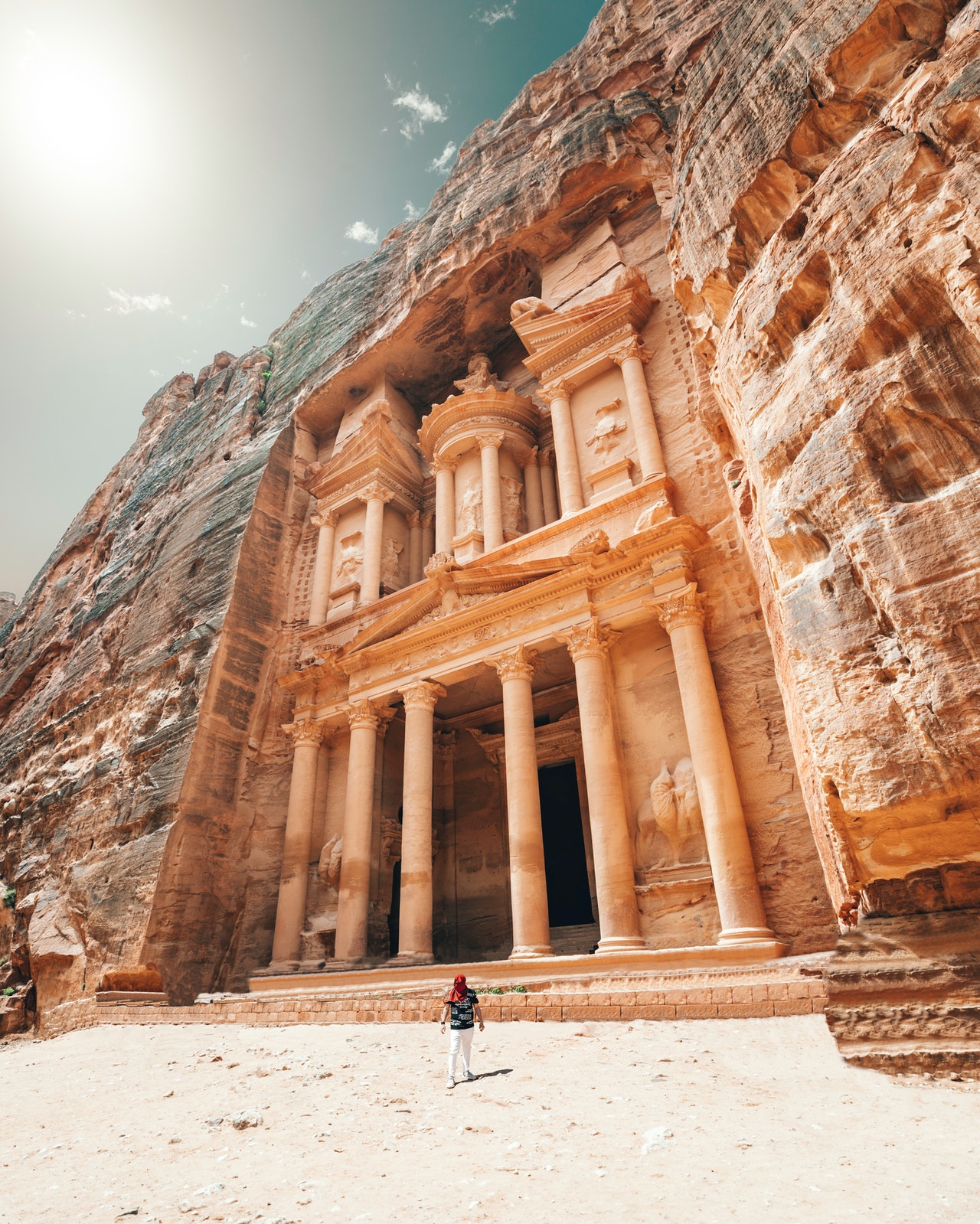
Photo by Spencer Davis
The Treasury
The Treasury’ is one of Petra’s elaborate temples. Its purpose is unclear, however, as it is believed to be a place to store documents or as a graveyard of Nabatean royalty. There are legends concerning the decorative urn above the entrance and one of it is that an Egyptian Pharaoh hid treasures on the urn.
Ad Deir
This venerable monumental rock building in the ancient city of Petra is ‘the Monastery’. Local Bedouins gave its name when they saw the cross inscriptions in the interior back wall of the monument during the Byzantine period when Christians were present.
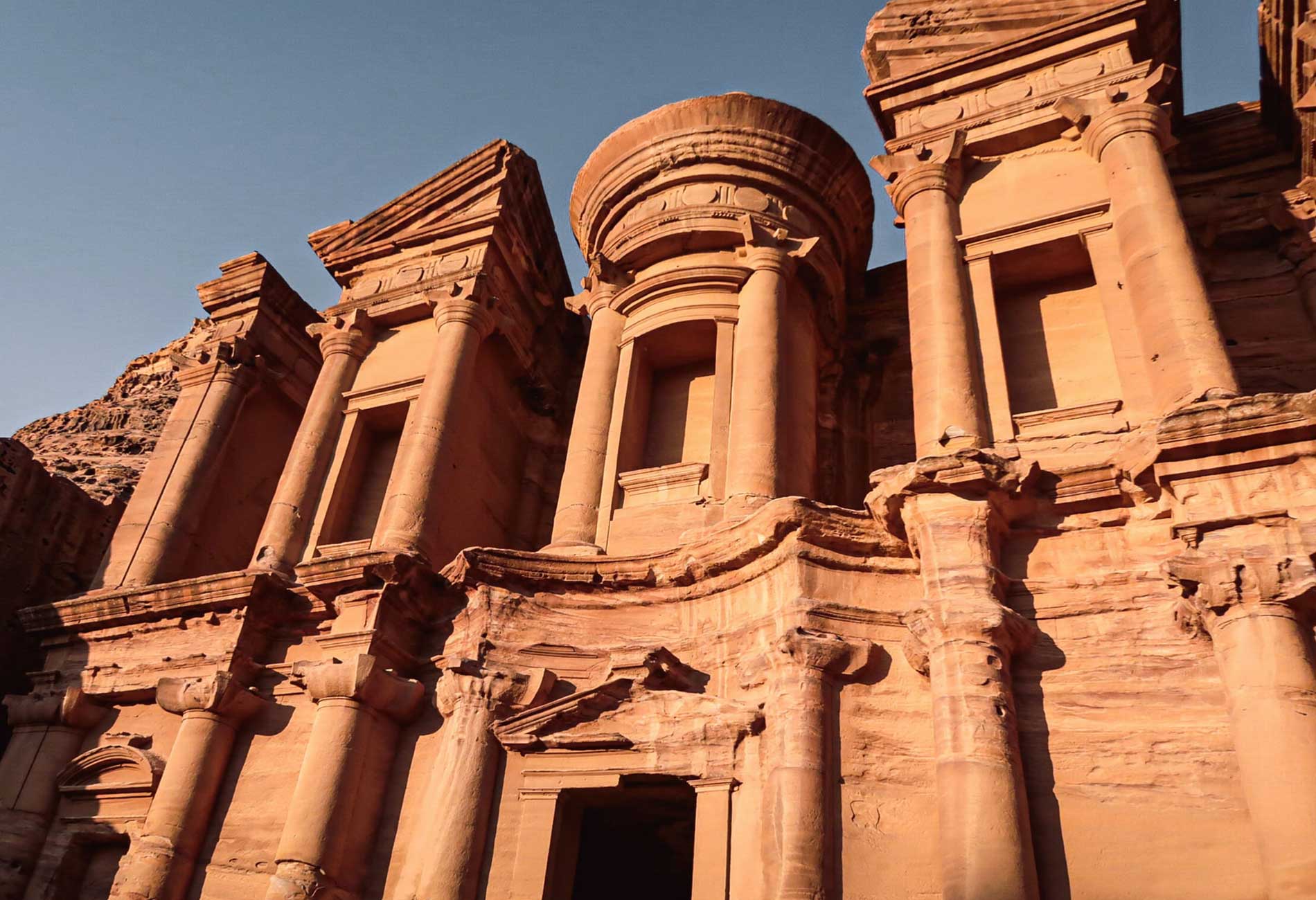
Photo by Sylvain Gllm
Urn Tomb
One of Petra’s two Nabatean royal tombs is the Urn Tomb and it is thought to be Nabatean King Malchus II’s. Its name was gained from the design of a lidded urn which crowned the triangular pediment above its columns. The tomb is on a hill of the outer siq of Petra and is constructed with a large colonnaded courtyard and sandstone cliff byzantine church.
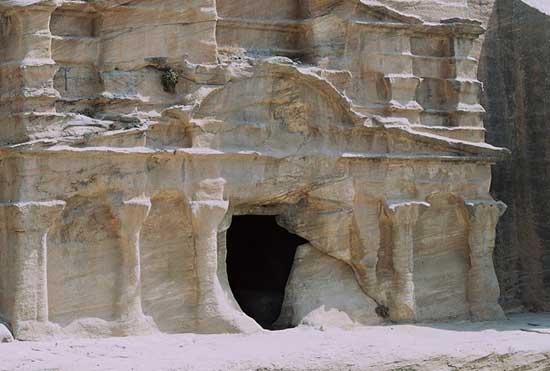
Photo by stux
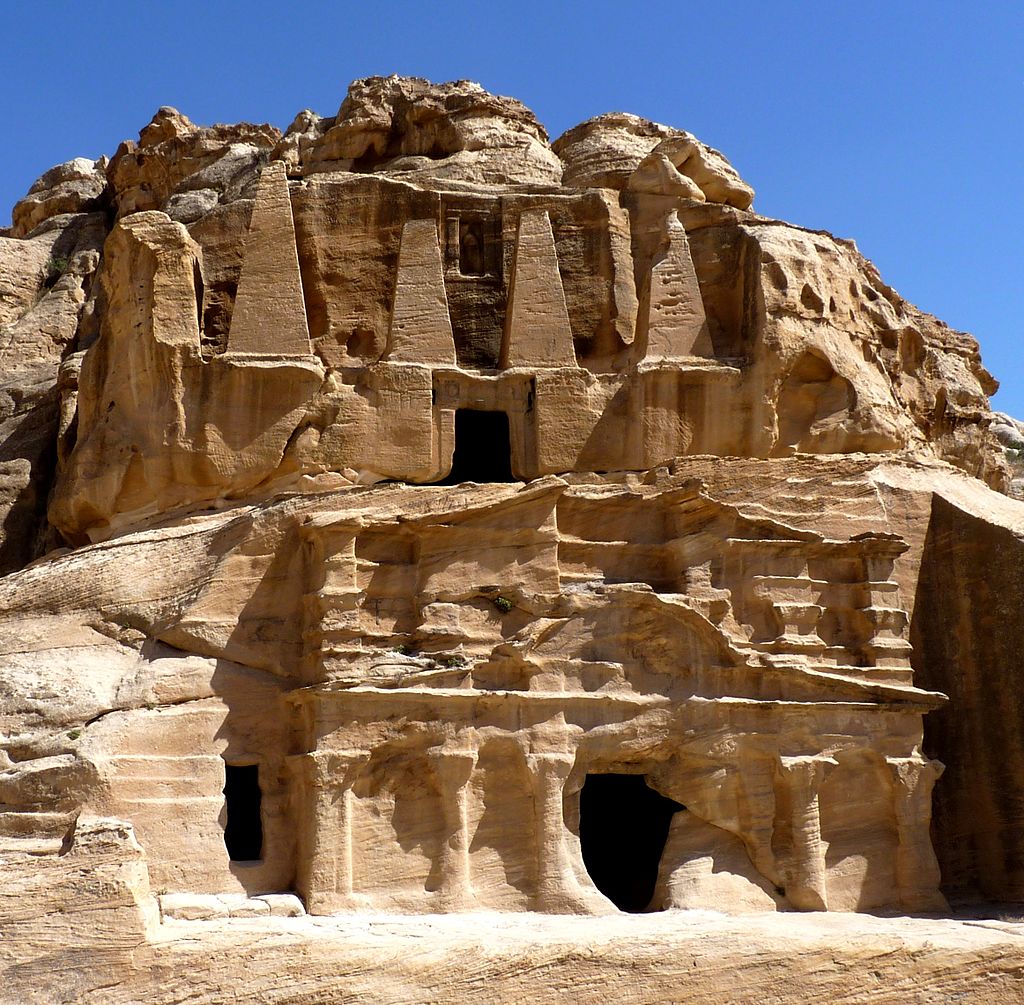
Photo by Dudva
Obelisk Tomb and Triclinium
The rock structures stacked together with the unique Nabatean architecture but the two are different tombs. The upper structure has four pyramid-shaped pillars which are funerary symbols of the buried five people. The bab as siq is the gateway to the siq and its triclinium was a banqueting hall.
Amman Citadel
Amman has seven jebels – or hills and one of it is the Jebel Al Qala’a, “the hill of the citadel” which is also the city’s highest. The citadel was already inhabited in the Neolithic period but was fortified in the Bronze Age, giving it a long occupation history with a number of civilizations.
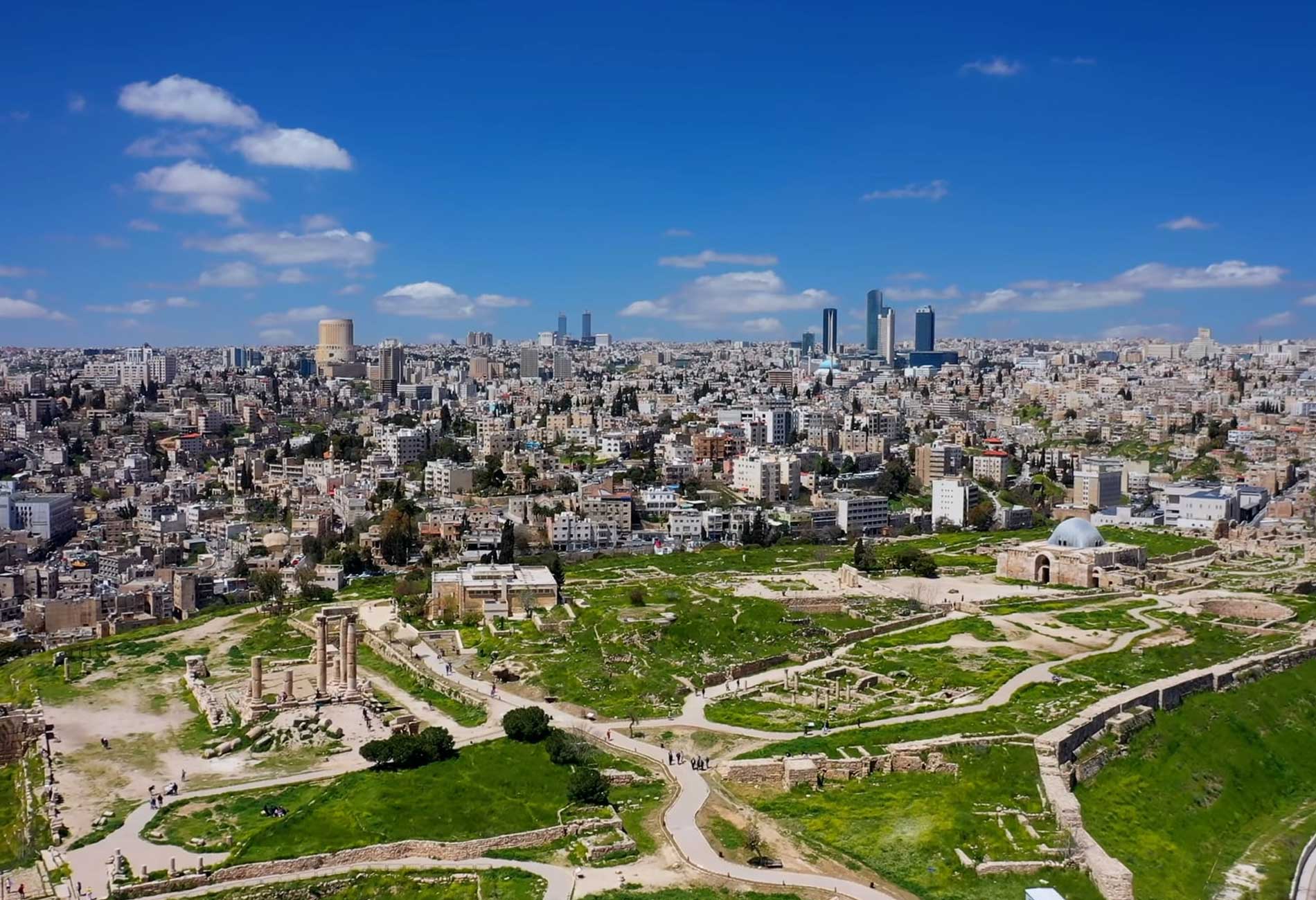
Photo by Daniel Qura
Temple of Hercules
The temple of Hercules is one of Amman Citadel’s historic sites. Geminius Marcianus, who was Governor of the Province of Arabia at the time had built the temple but it was unfinished for unknown reasons. Archaeologists’ findings of Hercules’s gigantic fingers, elbow and scattering coins made the assumption that scattered body parts were from Hercules’s massive statue.
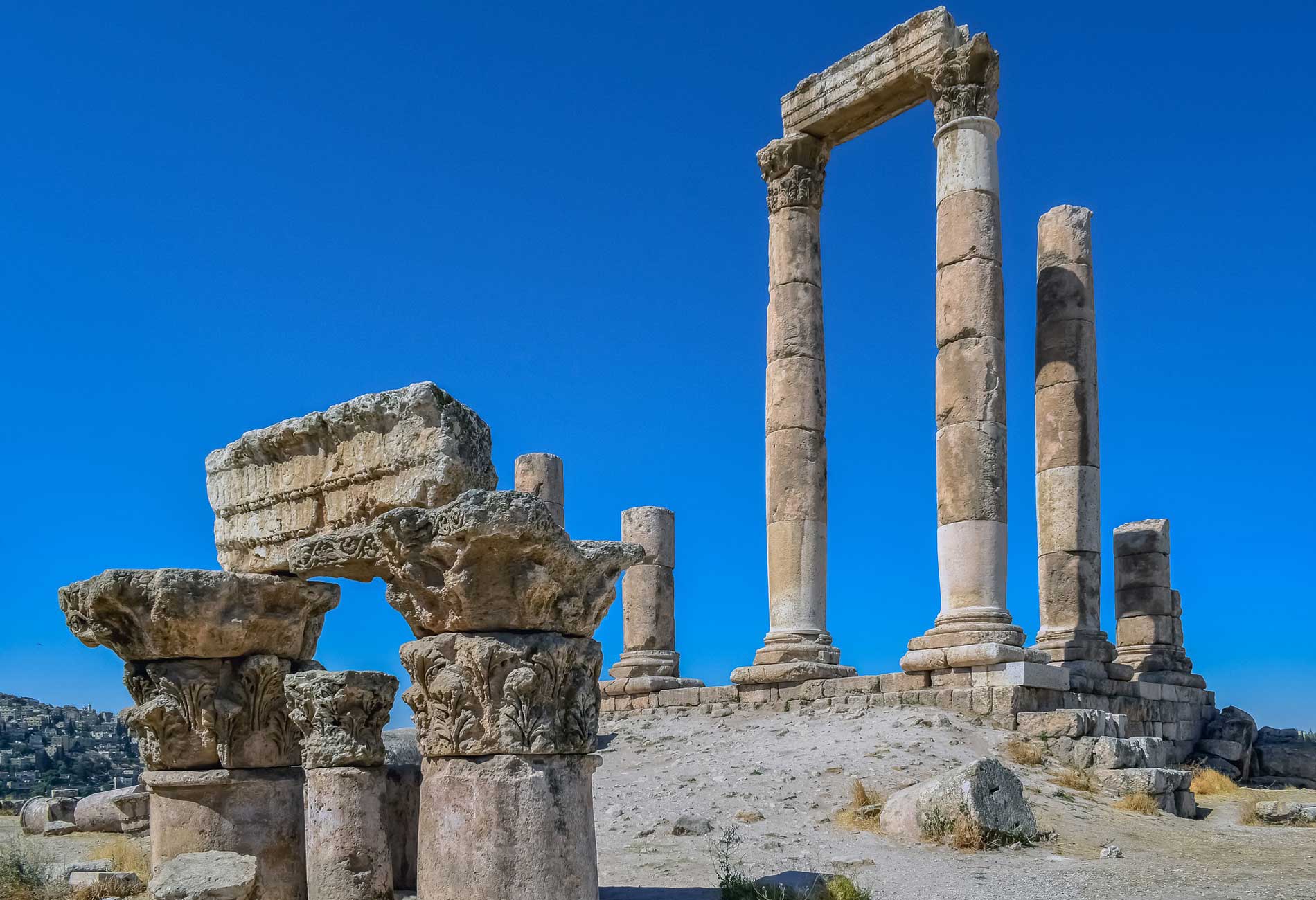
Photo by Dimitris Vetsikas
Roman Theater
Back when the city of Amman was known as Philadelphia, of the Roman Empire’s rule in the Southeastern Levant, the Roman Theater was its impressive monument. With the capacity of 6,000 seats, this 2nd century theatre hosts events even until today. It is also one of the city’s famous landmarks.
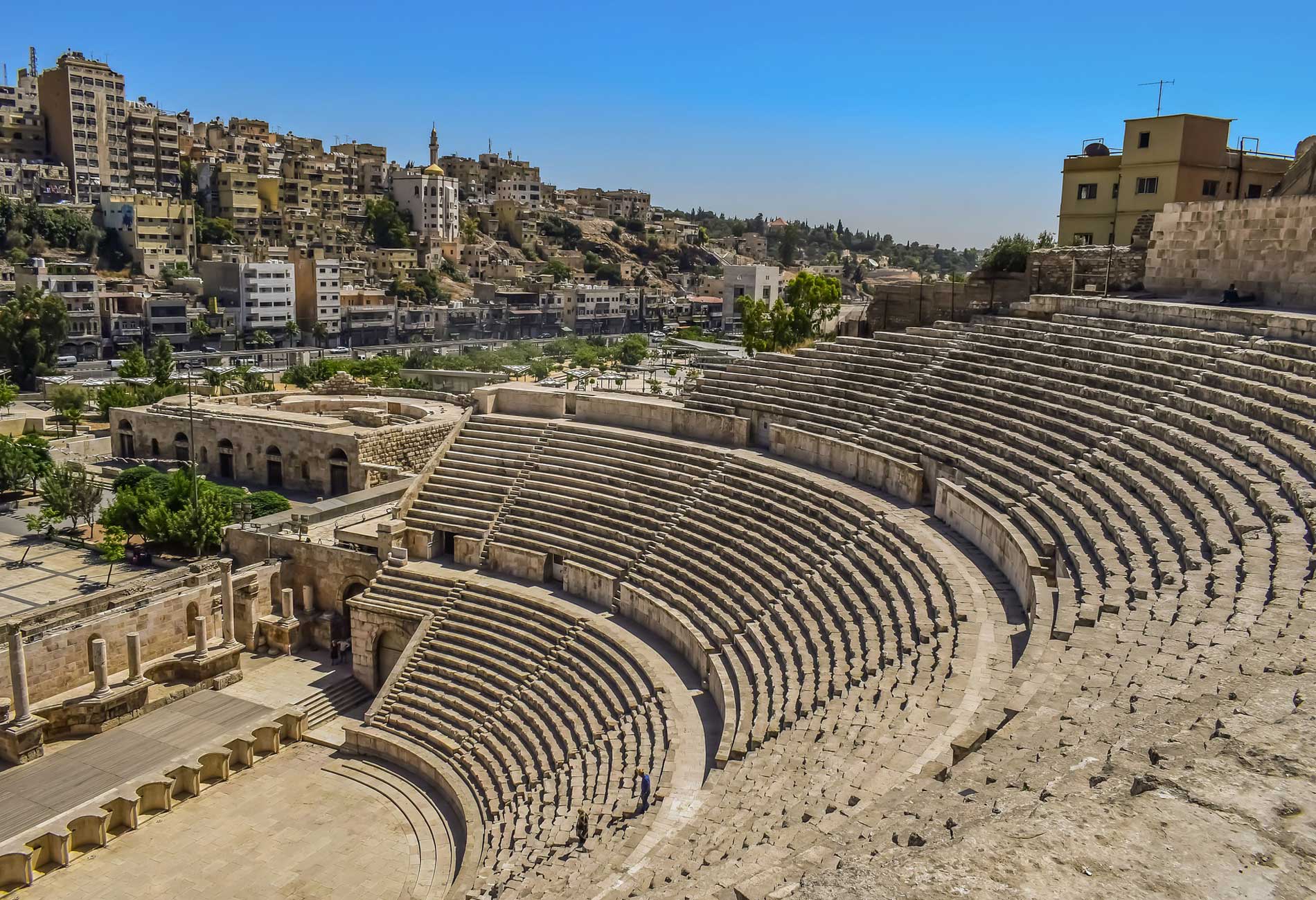
Photo by Dimitris Vetsikas
Umayyad Palace
Umayyad caliphs of the Umayyad dynasty built desert castles during their reign for their personal residence, trade center, outposts and for building relations with the local Bedouins. One of these castles is the Umayyad Palace which is in Amman, Jordan. The palace is Islamic in Architecture and is composed of three main areas; open space with large water cistern for gathering people, audience hall and independent buildings.
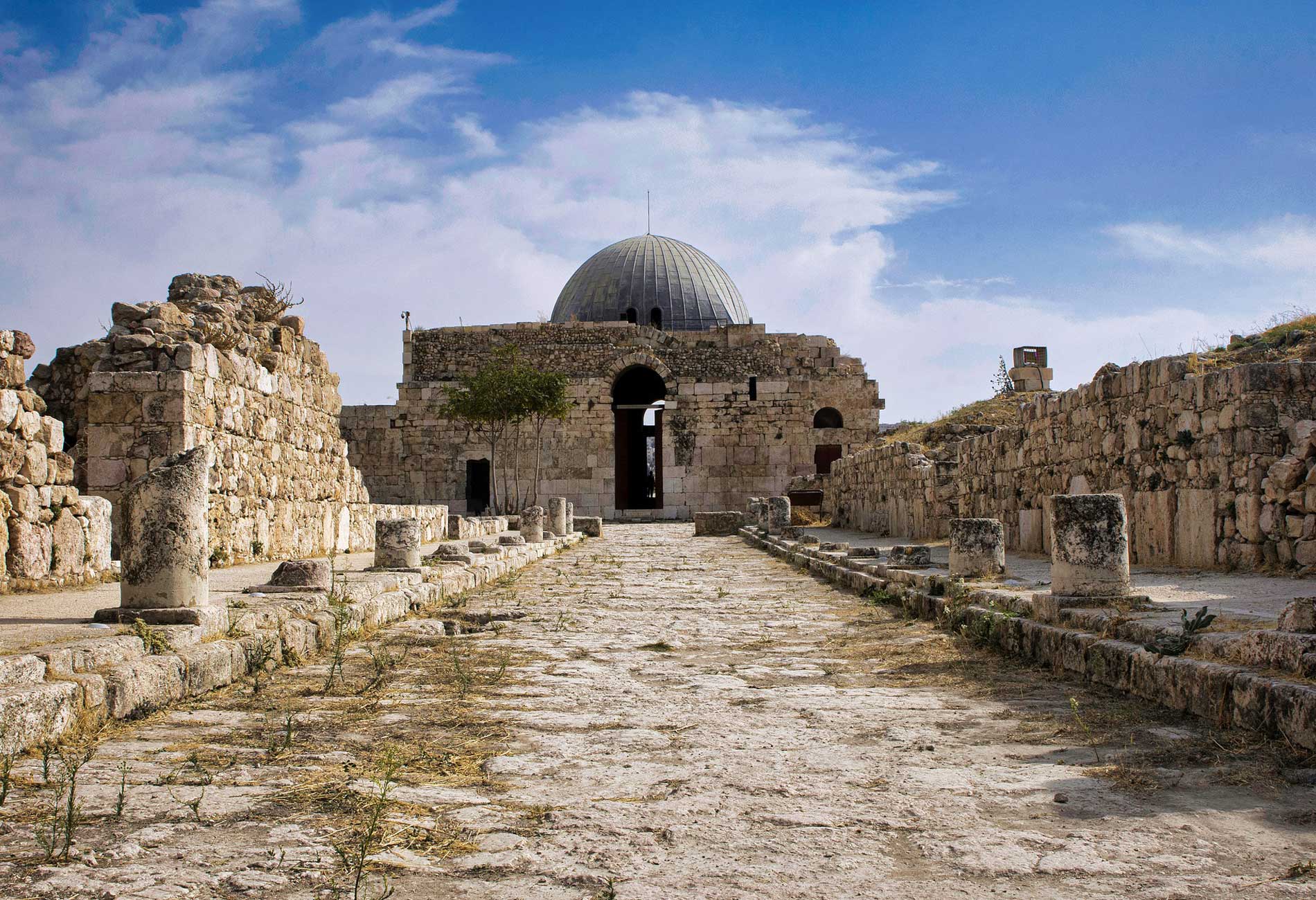
Photo by Hisham Zayadnh
Hadrian Arch
The ancient Roman structure Hadrian Arch, which is part of Jerash was built in the winter of 129-130 to honor the Roman Emperor Hadrian’s visit in the city. The arch stands at the height of 21.5 m high and is 25m wide, making it one of the largest arches of the Roman Empire.
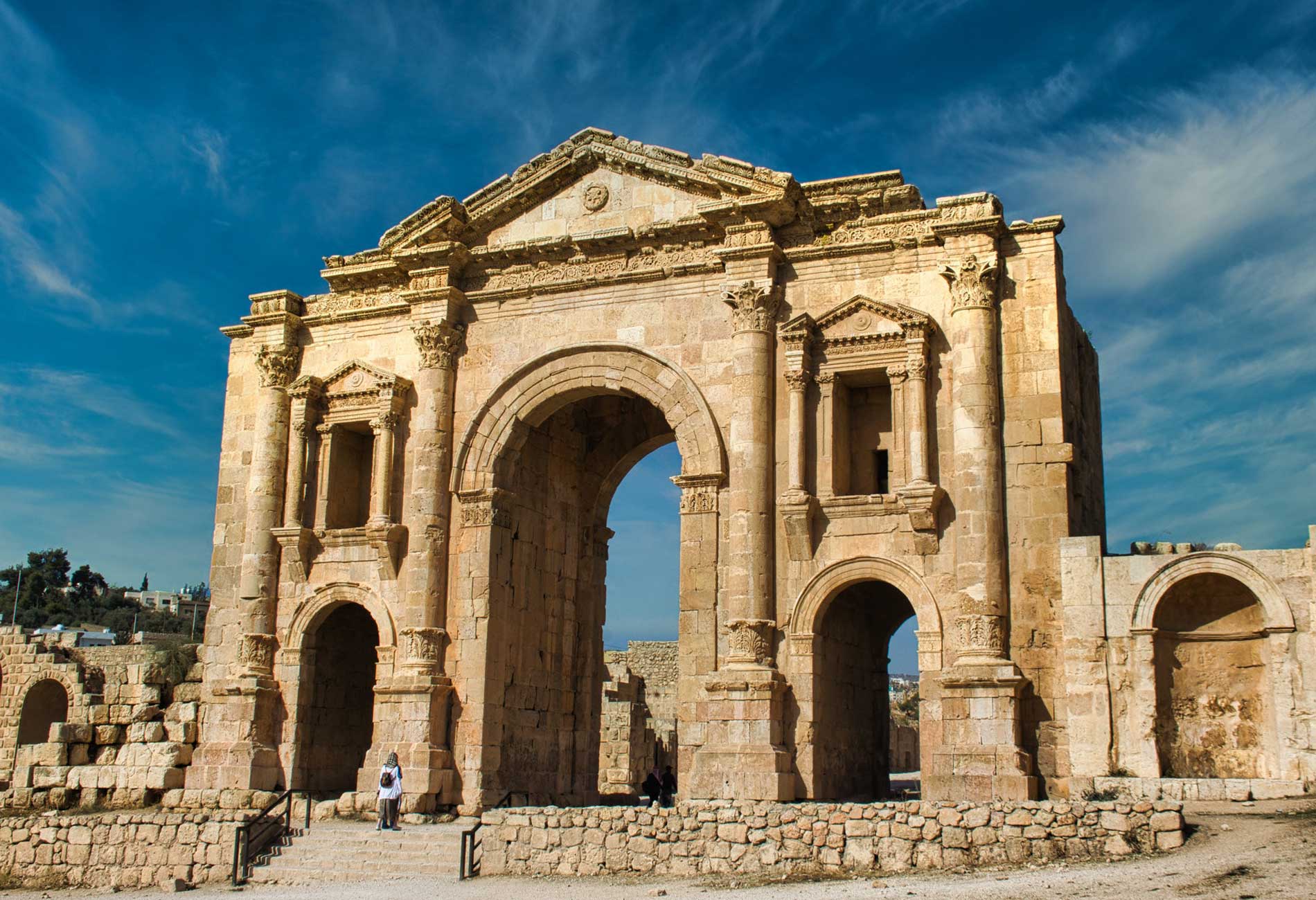
Photo by Hisham Zayadnh
Ajloun Castle
Ajloun castle is a 12th century Islamic castle built by the Ayyubids and enlarged by the Mamluks in the 13th century. It was also known as ‘Qal’at ar-Rabad’ or the ‘castle with the suburbs’. The castle serves as a fortress to control the Bedouins, control the traffic of the road connecting Egypt and Damascus and to protect their realm against the crusader incursions.
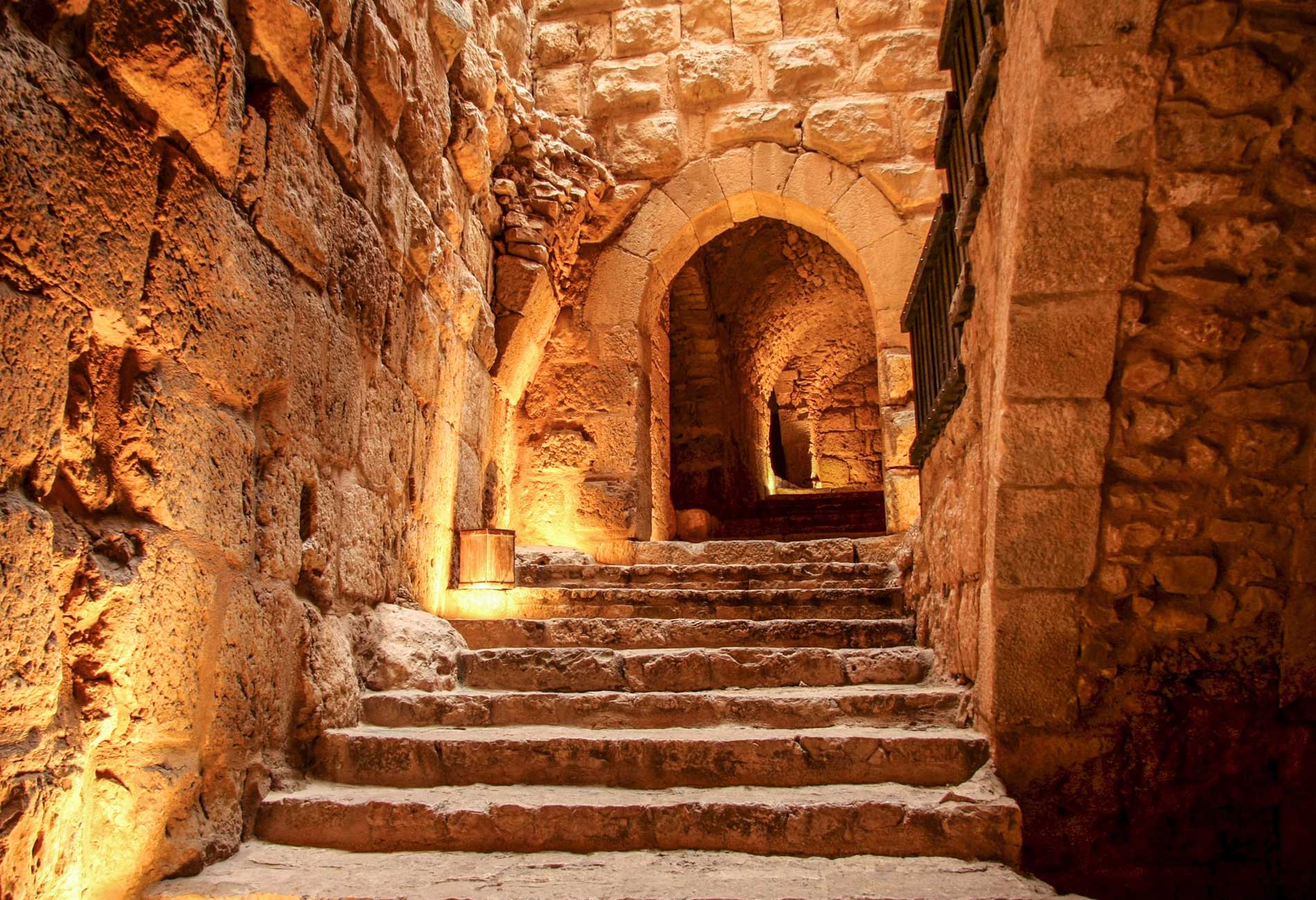
Photo by Mario La Pergola
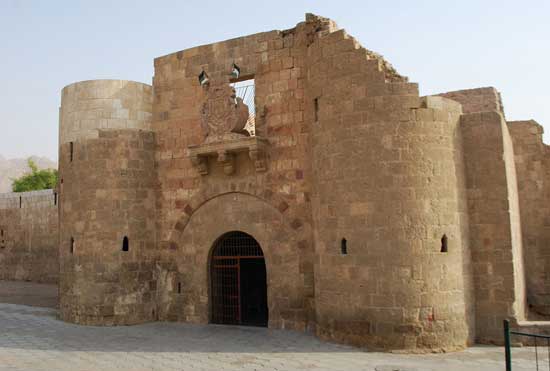
Photo by Jean Housen
Aqaba Fortress
Also known as the Mamluk Castle of Aqaba, Aqaba fortress or Aqaba castle was built by the Mamluks and fortified as caravanserai by the Ottomans for the pilgrimage route. The area in the fort would be filled with Pilgrims and passer-by’s for security and lodging. Some of the fort’s chambers turned into military barracks after the Arab Revolt.
The Baptismal site of Jesus Christ
The wilderness of the Jordan River Valley is where Al-Maghtas is located, the traditional site of the baptism of Jesus Christ. It was venerated since the Byzantine times and it is also referred to as Bethany and Bethabara. The site has the nearby hermit caves, monastery ruins and churches.
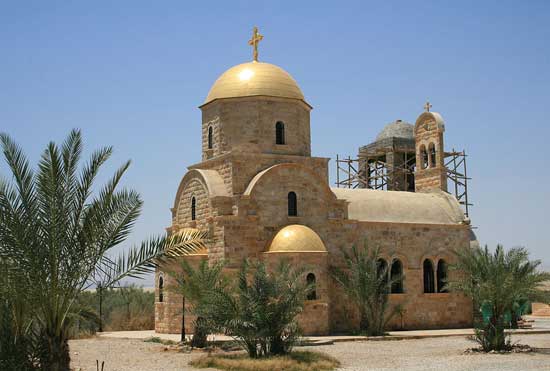
Photo by Hisham Zayadnh
Jordan has more than what is listed above but surely the list pumps you to go on an archaeological adventure doesn’t it? Which of these have you already visit?
Share it with us in the comments below!
Read our previous France post which is
11 Things To Do To Get The Most Out of France!
in case you missed it!
Disclaimer: Photos belong to the following owners. Please contact us at rdv.voyage@gmail.com if you would like us to remove and not share your content. You can also reach us out in our FB page.





